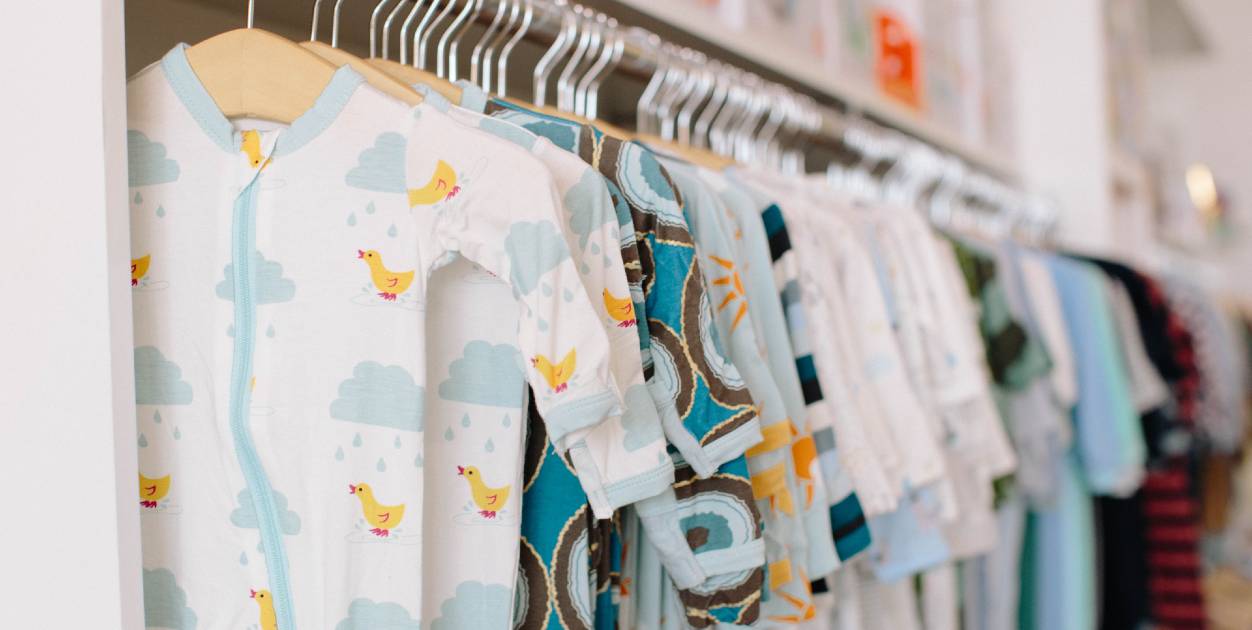ENCORE #2: Kids Clothing

To piggyback onto the other encore episode I did on sustainable fashion, in this episode I want to talk about kids clothing specifically. What do you do when you want to buy sustainable clothing for your kids but you also know how fast they grow out of everything? Let’s explore, shall we…
Product Recommendations
Episodes Mentioned
Listen to the SUSTAINABLE FASHION episode here.
Listen to the LAUNDRY episode here.
Source List:
https://economictimes.indiatimes.com
SUBSCRIBE
Subscribe on iTunes here.
Subscribe on Spotify here.
Subscribe on Google Podcasts here.
Transcript
Hello, everyone! I’m back with my last encore episode of Season 1 in promotion of my online business school for sustainable fashion brands that is currently open for enrollment until May 20th!
To piggyback onto the other encore episode I did on sustainable fashion, in this episode I want to talk about kids clothing specifically. What do you do when you want to buy sustainable clothing for your kids but you also know how fast they grow out of everything? Let’s explore, shall we…
[intro]
Okay, so first, what’s the issue with traditionally-made children’s clothing from your widely-known mainstream brands?
Well, much like I shared in the laundry episode, there are more than 8,000 synthetic chemicals used to produce the clothing that most of us wear everyday. Scientific research and analysis has proven that many of them are both toxic and carcinogenic.
Whether it’s pesticides from conventionally-grown cotton or petrochemicals from fabrics like polyester and nylon, there are new chemicals introduced at every stage of the clothing production process that leave residue eventually making it onto our skin.
So, that’s the potential health impact on our kids (rashes, allergies, asthma and even worse), but there’s also an environmental impact that we can’t discount:
Here are a few statistics, published by the UNEP and the Ellen MacArthur Foundation:
- Every year, the fashion industry uses 93 billion cubic metres of water – enough to meet the water needs of five million people.
- Around 20% of wastewater worldwide comes from fabric dyeing and treatment.
- Of the total fiber input used for clothing, 87% is incinerated or disposed of in a landfill.
- The fashion industry is responsible for 10% of annual global carbon emissions.
- Every year, half a million tons of plastic microfibers are dumped in the ocean, the equivalent of 50 billion plastic bottles.
And if that’s not enough, there’s also the human rights impact: Millions of people are employed in the clothing industry, often in developing countries where labor regulations are at a much lower standard than is safe for its workers.
It is also estimated that 77 million agricultural workers suffer poisoning from pesticides each year growing conventional cotton. Exposure to azo dyes has been associated with cancer in textile workers.
And one of the most tragic stats of the traditional fashion industry is that conventional cotton farmers in India account for over 7% of the country’s overall suicide rate.
So, those are some of the reasons you may want to consider skipping The Children’s Place or Old Navy or the Gap, but what’s to be done?
I’ll tell you from experience, having a three year old, that I take a three-pronged approach.
- The majority of the clothes my son wears are hand-me-downs from my nephew. (That’s in thanks to my mom who saved all of his clothes for five years.)
- If there’s something specific we need (for example, a rash guard for the beach or a pair of shoes) I buy almost everything else on Kidizen. This is a second-hand kids clothing app where you can buy used clothing from individual sellers.
- Then anything else I need to fill in or *have to have* I buy from small sustainable and ethical fashion brands that are independently owned.
My favorite one is a Canada-based brand that graduated from Factory45 called Pure Colour Baby. Everything is made in Toronto by the founder, Lindsay, and her team of sewers and all of the fabric is made from sustainable fabrics like organic cotton. The best part is that most of the clothing is designed to grow with your kid — which may sound hard to believe, but I can personally attest to this. My son wore a pair of harem pants from Pure Colour Baby from the age of 10 months until he turned three. The clever grow-with-you design definitely makes you feel like you got your money’s worth.
So, those are my suggestions for you — hand-me-downs from older siblings, friends, family members or Goodwill. Use Kidizen to fill in specific needs. And then make sure to support your favorite sustainable fashion kids brands (that are a higher price point) but can be purchased every once in a while because it’s something you love or something you’d love to give as a gift.
With the rate that little kids go through clothes, the planet will thank you.
If you’d like to get involved in being part of the sustainable fashion solution, beyond your impact as a shopper, applications to Factory45 are currently open! Factory45 is the online business school for fashion entrepreneurs and I work with people, just like you, to launch their own brands in a way that’s sustainably and ethically made. You can learn more about Factory45 at factory45.co
Thanks so much for listening to this episode of The Clean Living Podcast — I’m your host Shannon Lohr. If you know someone who has an idea for a fashion brand but has been stuck at a dead-end or isn’t exactly sure where to get started, please send them this episode or a link to Factory45. I’d love to help them. Here’s to creating a cleaner, more sustainable world for all of us.

